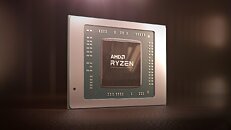- Joined
- Oct 9, 2007
- Messages
- 47,677 (7.43/day)
- Location
- Dublin, Ireland
| System Name | RBMK-1000 |
|---|---|
| Processor | AMD Ryzen 7 5700G |
| Motherboard | Gigabyte B550 AORUS Elite V2 |
| Cooling | DeepCool Gammax L240 V2 |
| Memory | 2x 16GB DDR4-3200 |
| Video Card(s) | Galax RTX 4070 Ti EX |
| Storage | Samsung 990 1TB |
| Display(s) | BenQ 1440p 60 Hz 27-inch |
| Case | Corsair Carbide 100R |
| Audio Device(s) | ASUS SupremeFX S1220A |
| Power Supply | Cooler Master MWE Gold 650W |
| Mouse | ASUS ROG Strix Impact |
| Keyboard | Gamdias Hermes E2 |
| Software | Windows 11 Pro |
AMD has reportedly signed up with Samsung Electronics to shift some of its 4 nm processor silicon fabrication from TSMC. The apex Taiwan-based foundry is reportedly operating at capacity for its 4 nm-class nodes, with customers such as Apple and Qualcomm sourcing 4 nm mobile SoCs on the node, leaving AMD with limited allocation and/or bargaining power with TSMC. The company relies on 4 nm for its Ryzen 7040 series "Phoenix" mobile processors, and is in the process of adapting its design for Samsung's 4 nm-class nodes (of which there are five types for AMD to choose from).
Switching to Samsung probably gives AMD more scalability, particularly given that "Phoenix" has missed its release timeline, leaving AMD with the 5 nm + 6 nm Ryzen 7045 series "Dragon Range" MCM in the premium segments, and older 6 nm 7035 series "Rembrandt-R" in the mainstream and ultraportable segments, but nothing "apt" to compete against Intel "Raptor Lake-U" and "Raptor Lake-P." AMD has a limited window in which to ramp up "Phoenix," as Intel readies "Meteor Lake" for a 2H-2023 debut, with a focus on mobile variants.

View at TechPowerUp Main Site | Source
Switching to Samsung probably gives AMD more scalability, particularly given that "Phoenix" has missed its release timeline, leaving AMD with the 5 nm + 6 nm Ryzen 7045 series "Dragon Range" MCM in the premium segments, and older 6 nm 7035 series "Rembrandt-R" in the mainstream and ultraportable segments, but nothing "apt" to compete against Intel "Raptor Lake-U" and "Raptor Lake-P." AMD has a limited window in which to ramp up "Phoenix," as Intel readies "Meteor Lake" for a 2H-2023 debut, with a focus on mobile variants.

View at TechPowerUp Main Site | Source







